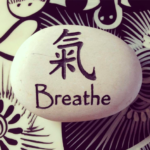Wouldn’t it be great to stop feeling hijacked by anxiety, stress and depression every time life gets messy? Good news—you can learn to manage your emotions, manage your stress and reach your goals.
Now the bad news, change doesn’t magically happen, no matter how bad you want it. You could have a PhD in positive thinking, but without the Big A, those well-intentioned thoughts fade as fast as a teen’s motivation to clean that wasteland the rest of society refers to as a bedroom.
And the A stands for Action, by the way. If spring’s got you feeling less than enthused about creating sparkly, shiny, dust-free countertops, waxed floors, and empty closets, I’ve got you covered. Not like I’m coming over to scrub your obode, but I can help you clear the mental debris to make room for positive emotions, healthier relationships, and less anxiety.
To usher in the spring season, here is a list of mental health and wellness activities for the month of April (or any month).
You’re the expert on your life, so choose which exercises resonate with you. You can tackle one daily, skip around, or group them together for the weekends, depending on your schedule. The goal is to develop healthy habits. The theme is holistic healing, so think mind, body and spirit, vibrant energy, and let go and flow.
Lifestyle
Day 1. Make sleep a priority. Prime your bedroom for a good night’s rest with cool temperatures and a dark, uncluttered atmosphere. In addition to the negative effects to our mental and physical health, sleep deprivation is dangerous. The National Highway Traffic Safety Administration estimates that 100,000 police-reported crashes are the direct result of driver fatigue each year. This results in an estimated 1,550 deaths, and 71,000 injuries.
Day 2. Wake up 10 minutes earlier than normal. If you’re rolling your eyes thinking there’s nothing normal about that, consider this: How we start each morning sets the tone for our day. If you oversleep and subsequently run around yelling at everyone in your wake while trying to get out the door, chances are your day will follow the same chaotic pattern. Practice + preparation are king and queen to finding your rhythm and groove.
Day 3. Start the day with a warm cup of water with lemon. Your body is dehydrated upon waking. Drinking water with lemon helps to rehydrate and replenish your mind and body, plus it plus primes your liver to start producing bile.
Day 4. Own your 120-minutes. According to behavior economist Dan Ariely, most people are productive in the first two hours of the morning. Not immediately after waking, but typically one hour after. “One of the saddest mistakes in time management is the propensity of people to spend the two most productive hours of their day on things that don’t require high cognitive capacity, like social media.”
Attitude Check
Day 5. Resist complaining. To up the ante, try this: Every time you catch yourself whining, donate money to an organization or cause you absolutely loathe.
Days 6-8. Read (or reread) Man’s Search for Meaning. This classic highlights Victor Frankl’s psychotherapeutic method of finding your why despite extraordinary situations, and choosing dignity in the face of suffering.
Health and Wellness
Day 9. Add more greens to your diet. According to Harvard’s School of Public Health, consuming vegetables can reduce the risk of stroke, heart disease, and some cancers. Additionally, choosing greens over higher-calorie and processed foods can help manage body weight.
Day 10. Check your hydration. Studies link depression to dehydration because 85 percent of brain tissue is water, and dehydration causes a decrease in energy generation in the brain. A lack of adequate water intake can also contribute to fatigue, foggy thinking, headaches, and much more.
Day 11. Schedule a doctor visit for a physical exam. Many health issues contribute to, mimic or cause anxiety, stress, and nervousness.
Day 12. Plan a nature walk, a hike or a picnic. Nothing like the smell of fresh air, an open sky and a digital detox to feel renewed and refreshed.
Day 13. Fly a kite. Whimsical, spontaneous play takes us back to childhood when we didn’t care so much what others thought. Get in touch with your inner kid and have fun, fun, fun!
Mindfulness, Calm and Relaxation
Day 14. Be mindful versus mindfull. As habitual as it may be to revert to the past or worry about the future, doing so means present moments are passing you by. Click here for a helpful resource to revel in the here-and-now.
Day 15: Map out your calm plan and your relation routine. The key to long-lasting change is found through self-awareness. You can have the best intentions in the world, but execution will be hard if you’re not paying attention to your body’s stress signals. For some people, getting in the right frame of mind means yoga or meditation, while others prefer running or an early morning workout. Choose those activities which help you feel calm and centered and schedule them into your day. A quick Google search for ‘yoga with Adrienne’ or the ‘calm’ app is a wonderful way to begin.
Self-Awareness Around Your Thoughts, Feelings and Actions
Day 16. Inventory your thought process. A common belief about bad moods is that your feelings control you. In actuality, your thoughts influence your feelings, which then influence your actions. Click here for a monster article about cognitive-behavioral therapy to help you can change your thoughts, once and for all.
Day 17. Set aside worry time. When stressful thoughts show up unannounced your whole day can be thrown off track. Reverse engineer this tendency by scheduling a block of time—say 10 minutes every day at 4:00 p.m.—to deal with worries. Doing so reduces the chance that you’ll stop at every distraction to address your stress. When the afternoon rolls around, you just may forget many of your troubles.
Day 18. Recognize false alarms. The fear of your house burning down because you left the stove on has never come true. That tightening in your chest doesn’t mean you’re having a heart attack; it’s your body’s natural response to arousal. Many thoughts and sensations we interpret as signals for concern—even panic—are just background noise. Think of each thought as a passing train with many stops along the way. You don’t have to pay attention every single time the train stops—you’ve noticed the thoughts; now let them pass by.
Day 19. Beware of catastrophizing. This is when your default thinking goes straight to the worst-case scenario. Take a deep breath, walk around the block to clear your head, and befriend logistical, rational thinking. Or just tape this awesome quote to your fridge:
“P.S. You’re not going to die. Here’s the white-hot truth: if you go bankrupt, you’ll still be okay. If you lose the gig, the lover, the house, you’ll still be okay. If you sing off-key, get beat by the competition, have your heart shattered, get fired…it’s not going to kill you. Ask anyone who’s been through it.” —Danielle LaPorte
Day 20. Answer this when caught on the worry train: Am I telling myself stories again?
“In essence, the practice is always the same: instead of falling prey to a chain reaction of self-hatred, we gradually learn to catch the emotional reaction and drop the story lines.”—Pema Chödrön
Avoid Panic Attacks
Day 21. Reduce panic attacks by practicing this sequence:
a. Acknowledge the panic symptoms. This may seem counterintuitive since we’re programmed to avoid unpleasant situations. However, thought suppression—telling yourself over and again to stop thinking “I’m going to die!” only increases anxiety.
b. Stay in the fray. Because your brain’s amygdala (the area which controls the fear response) sends rapid-fire signals preparing you to fight or flee, you’ll need to counteract these irrational impulses. Grounding strategies include feeling your feet on the ground, or your hands on the steering wheel, or bracing yourself against a wall.
c. Be “here.” People do not have panic attacks in the present. In reality, you’re reacting to a past action, or to a future event. Being mindful of the here-and-now will help you can take actions to calm down.
d. Act. Now that your mind and body are more calm and present, it’s time to consider actions for riding out this unwelcome wave. Here are a few:
- Breathe slowly and deeply
- Close your eyes to block out overwhelming stimulation
- Drink water to cool down your body temperature
- Do jumping jacks to get rid of excess energy
- Challenge unhealthy thoughts
- Count to 10
e. Repeat steps 1-4. Because panic attacks vary in duration and frequency, you may find yourself starting to calm down, only to meet another episode. “Here I go again—this isn’t working!” Practice is the only way to ensure calm habits.
Let Go of Physical and Mental Clutter
Day 22. Forgive your mother, father, the 4th-grade bully and anyone who’s wronged you. This doesn’t mean you don’t have a right to be upset, but resentment packs a powerful and toxic punch. Along those same lines…Let go of your childhood. A huge factor in depression is the tendency to rewrite, relive or recreate your past.
Day 23. Get rid of unnecessary household items. Clean, simple, unfettered living is the way to make space for calming thoughts and feelings. Clearing out furniture, kitchen appliances, clothes, shoes, knick-knacks, and other non-essentials gives you room to breathe and higher energy levels, too.
Day 24: Clean out your car’s glove compartment and trunk. Many of us spend untold hours in our vehicles and they can get messy quick. While you’re at it, make a copy of your driver’s license, in case you forget your purse or wallet and need identification.
Healthy Boundaries
Day 25-27: Boundary building. We teach people how to treat us. Healthy boundaries define what’s okay and what’s not okay. If you’re feeling violated by others’ words or actions, chances are your boundaries need tightening. Conversely, if you’re prone to rigid behaviors, it may be a good idea to invite a flexible mindset. Caveat: This skill requires ongoing practice and modification. This printable worksheet can help you get started.
Stay Positively Connected
Day 28. Visit an animal shelter and bring treats, toys or old blankets for the kenneled-creatures. Chances are that 12-year-old German shepherd, energetic pit bull or yapping chihuahua are scared as heck. Slipping your hand, or a little something between the bars can help ease their pain and anxiety (and yours, too).
Day 29: Focus on what’s going well in your life. No matter your stressful your situation is right now, there’s always something you’re doing right. Too often, we’re overly critical of our deficits, diagnostic labels or past mistakes. Along those lines, look for the good in others. To quote Mr. Rogers:
“When I was a boy and I would see scary things in the news, my mother would say to me, “Look for the helpers. You will always find people who are helping.”
Day 30: Share this resource with a friend, family member, coworker, a neighbor, or on social media. Not only will this help to de-stigmatize mental health, but good deeds cause a chain reaction of other altruistic acts. Research shows that people are more likely to engage in generosity after observing others do the same. This ripple effect can inspire many others to make a difference, too!
While cleaning, clearing, scheduling and letting go may not be enjoyable tasks, the positive effects on your mental health and happiness will last well beyond the spring season. For a more detailed guide on creating space for more joy and less stress in your life, click here.
A version of this article appeared on Psychology Today.








